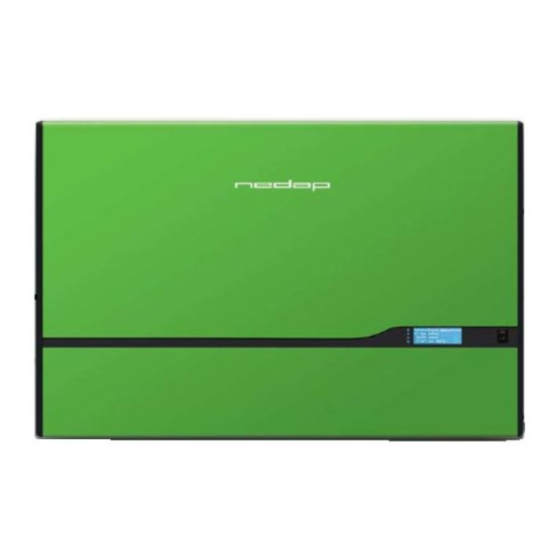Advertisement
Table of Contents
- 1 Table of Contents
- 2 Introduction
- 3 Step 1. Assembly
- 4 Step 2. Powerrouter AC Connection
- 5 External Relay for the Backup Power Supply
- 6 External Relay for Load Management
- 7 Step 3: Connecting the Sensor
- 8 Step 4: Connecting the Solar Strings
- 9 Step 5: Connecting the Batteries
- 10 Step 6: Connecting the Internet Connection
- 11 Step 7: Initialising the Powerrouter
- 12 Three-Phase Self-Use System
- 13 Glossary
- Download this manual
Advertisement
Table of Contents

Summarization of Contents
Step 1. Assembly
Assembly Important Considerations
Key guidelines for PowerRouter installation, including IP rating and ventilation.
Earthing and Current System
AC Fuse Recommendations
Recommends 16 A circuit breakers for AC GRID and AC LOCAL OUT connections.
Cable Cross Section Guidelines
Recommends 4 mm² copper cables for connections to minimize losses and voltage drops.
External Relay for Backup Power Supply
External Relay Connection
Explains how to connect an external relay for backup power during outages.
External Relay Specifications
Lists technical specifications for external relays in Europe and the UK.
External Relay for Load Management
Load Management Relay Connection
Details connecting an external relay to manage loads based on solar energy availability.
Load Management Activation
Explains how to configure parameters using the Software Installation Tool for load management.
Step 3. Connecting the Sensor
1-Phase Sensor for Monitoring
Describes the 1-phase sensor for measuring grid current and load demand.
3-Phase Grid Connection Notes
Notes on connecting sensors for 3-phase grid connections and error codes.
Step 4. Connecting the Solar Strings
Solar Module Compatibility
Lists compatible solar module types: Monocrystalline, Polycrystalline, Thin-layered.
Solar Cable Requirements
Recommends 4mm² or 6mm² double-insulated solar cables based on length.
Photovoltaic Module Earthing
Details earthing methods for photovoltaic modules for safety and performance.
Step 5. Connecting the Batteries
Suitable Battery Types
Describes suitable battery types: Sealed lead-acid (gel, AGM) and lead-acid wet batteries.
Battery Capacity and Service Life
Covers determining capacity, recommendations, and service life from pages 17-18.
Battery Operation and Charging
Covers temp effects, maintenance, winter mode, charging methods, discharge limiter from pages 19-20.
Battery Cable and Ancillary Connections
Covers cable cross-section, voltage sense, temp sensor, fuse, measuring devices from pages 21-22.
Step 6. Connecting the Internet Connection
Internet Connection Configuration
Details connecting the PowerRouter to the internet for log data transmission and monitoring.
Internet Communication Requirements
Outlines network requirements (port 80, dynamic IP) for PowerRouter internet communication.
Step 7. Initialising the PowerRouter
Display Initialisation
Explains the process of initialising the PowerRouter using its on-board display.
Software Tool Initialisation
Details using the Software Installation Tool for initialisation and firmware upgrades.
Battery Parameters Configuration
Battery Capacity Configuration
Explains the 'Capacity' parameter for connected 24 V batteries, including C10 value.
Battery Charge Current Configuration
Defines the maximum battery charging current, recommending 1/4 or 1/5 of capacity.
Battery Charging Method Configuration
Allows selection between 3-state adaptive or fixed voltage charging methods.
Vfloat and Vbulk Configuration
Parameters for fixed charging voltage (Vfloat) and bulk charge voltage (Vbulk).
Three-Phase Self-Use System
Three-Phase System PowerRouter Role
Explains how PowerRouters are deployed in three-phase networks for optimised self-use.
Multi-PowerRouter Single-Phase Setup
Discusses connecting multiple PowerRouters on a single-phase system and potential interference.




Need help?
Do you have a question about the PowerRouter PR37SB-BS and is the answer not in the manual?
Questions and answers